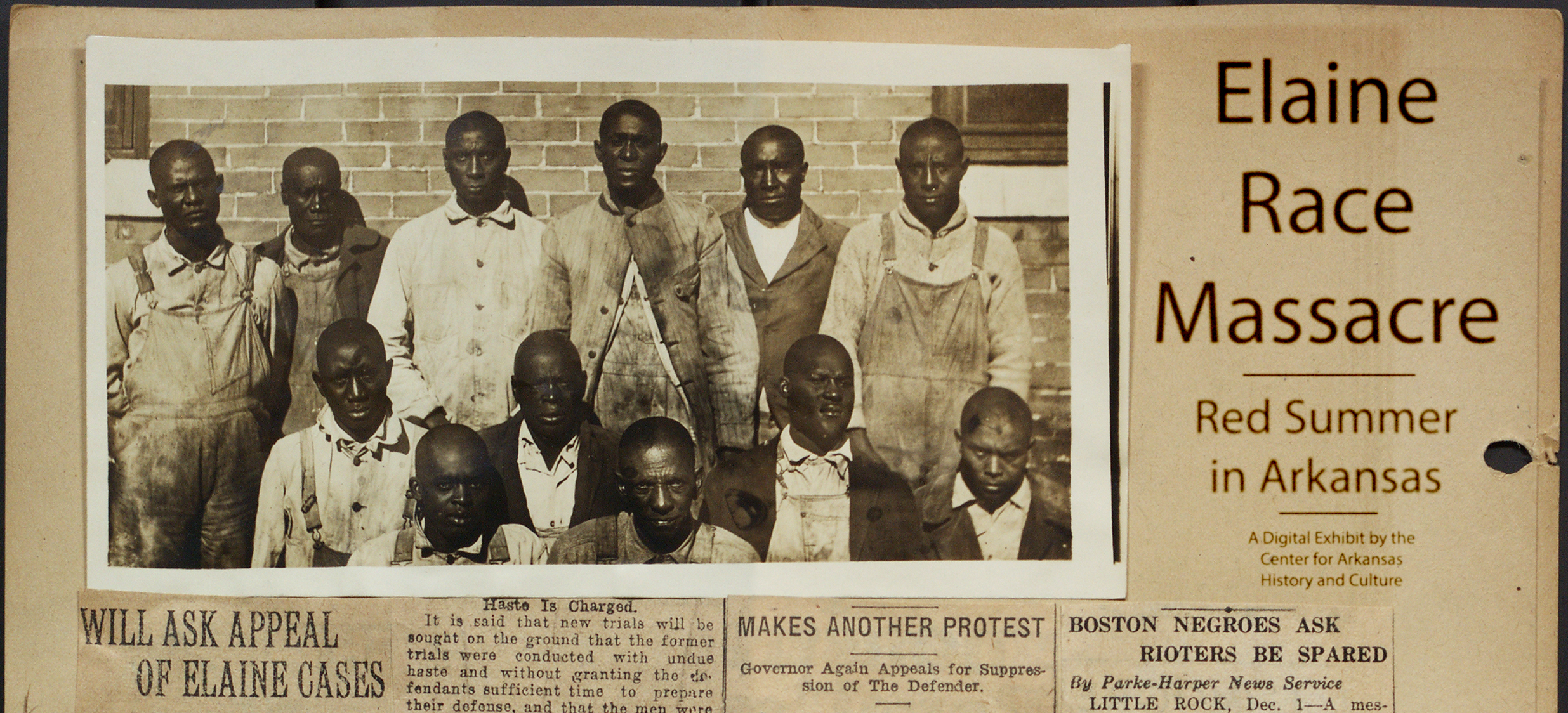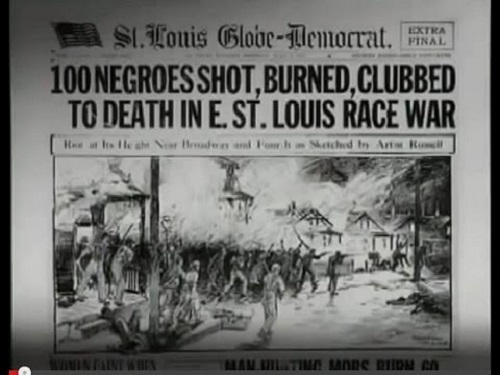

During the Red Summer of 1919, a wave of white-supremacist terrorist attacks was unleashed on Black Americans. From February to November, white mobs and gangs carried out anti-Black riots and lynchings to uphold the status quo — as they saw it — and keep Black Americans in their place.


From 1917 to 1923, white mobs destroyed dozens of Black towns and communities, murdering thousands of African Americans, injuring thousands more, and displacing tens of thousands. The year 1919 marked the zenith of these terrorist attacks.
Many catalysts led up to Red Summer: Veterans were returning home from World War I, causing a glut of workers in the job market. Black Americans were migrating en masse from the South to Northern cities. Black sharecroppers in the South were organizing for better pay and to end debt peonage. The “new Negro movement” of the early 1900s was becoming a force to be reckoned with, thanks to African-American veterans and civilians. This was a self-help movement started by Black elites who used respectability politics as a pillar.
Black veterans on ‘front lines’ against racists
But the overwhelming factor was that returning Black veterans were determined not to go back to dehumanizing, oppressive Jim Crow rule, second-class citizenship and subservience to whites. They brought this spirit back to their communities.


Another popular narrative pushed by politicians and the white media — and reinforced by military intelligence and the Justice Department — was that agitators, namely Bolsheviks and anarchists, were stirring up Black Americans. The 1917 Russian Revolution set off the Red Scare in the West. The uncertainty and trauma of World War I only exacerbated these fears.
There were 39 reported mass instances of anti-Black violence instigated by whites in U.S. cities and rural counties in 1919. They included an attack in Syracuse, N.Y., and several in Harlem, N.Y.
The first large-scale so-called riot occurred in Jenkins County, Ga. Police had gone to an outdoor family gathering at Carswell Baptist Church and arrested Edmund Scott. They hit him in the face and shot Joe Ruffin in the head, as he was trying to negotiate with them for Scott’s release after agreeing to pay his bond. The ensuing white mob shot and burned Joe’s two youngest sons – a 24-year-old veteran, and 13-year-old Henry.
The most intense fighting took place in Washington, D.C., and Chicago. The greatest number of African Americans were murdered in Elaine, Ark., where Black sharecroppers were organizing to stop exploitation of their labor and debt peonage.
White mobs frequently lynched African Americans. Lynching has enabled whites-only rule to prevail. Dispensing rough justice by collective lynching was the primary motive of racist mobs. It was viewed as a legitimate punishment of African Americans who defied white supremacy.
Collective anti-Black violence in Charleston, S.C., Longview, Texas, and elsewhere aimed to punish Black Americans who defied Jim Crow and asserted their equality with whites. Now the state uses the police and the criminal justice system to oppress and punish African Americans.
When African Americans were attacked, white officials usually handed the victims over to mobs. City and town officials did nothing to quell white violence until it was too late, especially in Washington and Chicago. After days of racist attacks in Chicago, violent encounters later that summer were stopped within hours. Police monitored Black communities and disarmed Black citizens.
Resistance and armed self-defense
When white mobs marched on Black communities, their members — men and women, veterans and civilians — set up armed posts, checkpoints and blockades to defend their families and property. Many Black folks in Knoxville, Tenn., Elaine, Ark., Washington and Charleston died doing so.
In Charleston, after an evening of mob attacks against Black individuals on May 10, Krugler explains: “Black Charlestonians got wind of the trouble and dispersed a rock-throwing mob. However white violence increased and Blacks continued to defend themselves and also began to retaliate.” Resistance tactics included banding together, carrying weapons, issuing advance warning of approaching mobs and engaging them.
Across the country, Black residents under attack by marauding white mobs responded with individual and collective acts of self-defense. They repelled or slowed down gangs of white attackers. In many cases, they prevented them from attacking Black neighborhoods. Armed resistance by African- American communities was not an anomaly.
African Americans fought a three-pronged war against white mob violence, a point Krugler crystallizes in his book. On the first front, they mobilized to defend against armed white mobs that formed to drive African Americans from industrial jobs or white neighborhoods, to punish them for their wartime prosperity, to protect white women from alleged crimes committed by Black men and as revenge for perceived or imagined slights against white folks.
On the second front, African Americans battled for the truth about the so-called “riots.” White corporate newspapers and local officials erroneously blamed African Americans for the riots, characterizing self-defense and armed resistance as unprovoked violence against whites.
The media openly and routinely described Black Americans in a racist tone, using bigoted language. The “blame-the-victim” narrative, still used today when police execute a Black, Brown, Indigenous or trans person, was fed by rumors and lies.
The fight for justice
Finally, on the third front, African Americans fought for justice. Black Americans faced hostile law enforcement officers and biased court systems in 1919, just as we do today. Black self-defenders against mob attacks were wrongly arrested and prosecuted in city-after-city when they had lawfully protected themselves. To get justice in court, they had to successfully correct the narrative and set the record straight about the origins of the “riots.” Publicizing the facts was imperative. Here, the Black press played an important role.
The NAACP, National Urban League and many other organizations undertook this task. They laid the groundwork so that Black defendants could get some sort of justice. This proved especially important in Elaine, Ark., and Jenkins County, Ga. Local juries convicted Black defendants in kangaroo courts. However, wrongly convicted Black folks did get some justice in state and federal courts.
Nevertheless, no whites in Southern states were ever prosecuted or jailed for harming or murdering African-American residents. In Charleston, white sailors had started the riot, but Black sailors and civilians were jailed. In Chicago, Black and white residents were convicted and imprisoned. In Elaine, Ark., 21 Black Americans pleaded guilty to second-degree murder, but their convictions were later overturned. Convictions of 12 Black men charged with murder and then imprisoned on death row were overturned in 1925 by attorney Scipio Africanus Jones.
‘Red Summer led to current Black Lives Matter movement’
What was the ultimate impact of Red Summer? It was the start of a long process which eventually ended Jim Crow and undid institutional bigotry, if not structural racism. It laid the groundwork for the Civil Rights Movement of the 1950s and 1960s and the current Black Lives Matter movement.
It was the dawn of Black militancy and a precursor to the Black Power movement. Significantly, the events of Red Summer illuminated clearly that Black peoples across the planet must work in solidarity toward freeing all peoples in the African Diaspora from Jim Crow rule, colonialism and imperialism.
Black political resolve was strengthened in 1919 in response to the white mobs which organized to put Black people down. “The red summer sparked a long effort that led to the integration and participation of Black Americans into every aspect of society and government,” wrote Cameron McWhirter in “Red Summer: The Summer of 1919 and the Awakening of Black America.”
Today, African Americans’ rights to dignity and equality are under attack. We must remember the most important lesson of Red Summer: Resist and fight back against the oppression and repression by those who would destroy us — even if we die trying.
The following are highlights from a speech given by Yemen’s Ansarallah Commander Sayyed Abdul-Malik Badr…
Panamá Beluche is a sociologist, professor and anti-imperialist organizer in Panamá, writing here about the…
Download the PDF Farmworkers organize three-day strike Palestinian factions demand an end to the famine…
In the more than 650 days since the Al-Aqsa Flood (October 7, 2023), a remarkable…
Special to Workers World Hosted by Panda Aid (China) and co-organized by the International Action…
The following statement summaries were posted July 18, 2025, on Resistance News Network. Palestinian factions…